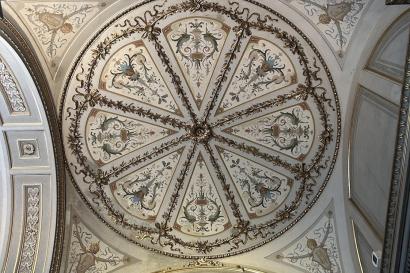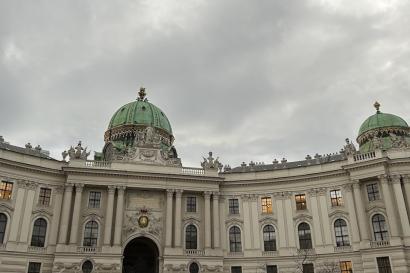
An Amalgamation of Influence
Nudist pop art, neon mirrors, gloomy pencil sketches, and nightmarish paper maché. The Albertina’s autumn exhibition breaks the mold of a museum that would have a clear and obvious topic for viewers, with its featuring of a variety of artistic styles and movements from both Austria and Germany. This autumn exhibition intends to show the mutual or non-mutual influence of artists from differing nationalities on each other’s work.
The show opened its doors on the 6th of September 2023 and will remain open until the 21st of January 2024. Any visitors of the Albertina during this time might recognize styles of photo-realism, abstract expressionism, pop art, Viennese actionism, and surrealism among others in this eclectic collection.
Thick Brushstrokes Leading to the Subconscious
One artist from Switzerland who taps into complementary connections, Liliane Tomasko, explains the influence of sleep and how it forms these diverse relationships.
“In dreams, elements of reality come together to make constellations that would otherwise be unimaginable. We create new connections between things, space and time. There is a sense of experimental freedom, dominated by the surreal and paradoxical, a relief from the logic and reason that shape the waking hours,” says Tomasko.
Some of the main themes that appear in Tomasko’s works are human togetherness, emotions, and intimacy. There is also significance to the color blue as an intermediary in her pieces to represent the sky and symbolize the transition from day to night.
Her abstract, acrylic painting, a dream of: A COIL THAT UNFURLED, was finished in 2018 and features wide, round brush strokes that show a contrast of lighter and darker hues. This painting does not seem to be happening in a specific location or time, but it does indicate the transition from sleep to daytime time frame or a varied set of emotional experiences. Given Tomasko’s motif of sleep, the overlapping blues, blacks, reds, and purple hues next to the whites, oranges, light blues, and light pinks indicate the transition from day to night or the conscious mind to the unconscious mind.
Also, since emotions are a major theme in Tomasko’s work, other potential meanings for the flowing lines intersecting could be that darker emotions of sadness or anger are connected to happier emotions through one, big, multicolored, unfurled coil. Tomasko could also be trying to convey the message that painful emotions can be mitigated through intimacy and human connection. Human connection in this case explains the overlapping lines.
Many psychologists will say that anger is a secondary emotion to an underlying feeling of physical or emotional pain. I find this to be fascinating here if the red brushstroke represents anger because it connects to a dark, blue line. This blue brush stroke could represent sadness as the underlying feeling of hurt.
While this piece may not require the most masterful control over the brush itself, the planning behind Tomasko’s themes was well executed in conveying a complex, cozy message that brings people together. Her piece also reminds viewers of the often-forgotten reality that there is always some joy in the saddest moments. Abstract pieces like this allow viewers to reflect on what they are feeling and tap into Tomasko’s fascination with different levels of consciousness in dreams. Her themes of light in relation to darkness may not be the most nuanced, but they come through in a sophisticated and timeless manner. Tomasko’s execution has the potential to grab viewers who are willing to surrender to her abstraction and look beyond the simple imprints of the brushstrokes.


Blake Nicholas
I was born and raised in San Diego, CA, and go to Occidental College located in Los Angeles. I am a philosophy major and an interdisciplinary writing minor. In most my free time, I like to dance. My favorite styles of dance are ballet and lyrical :)








